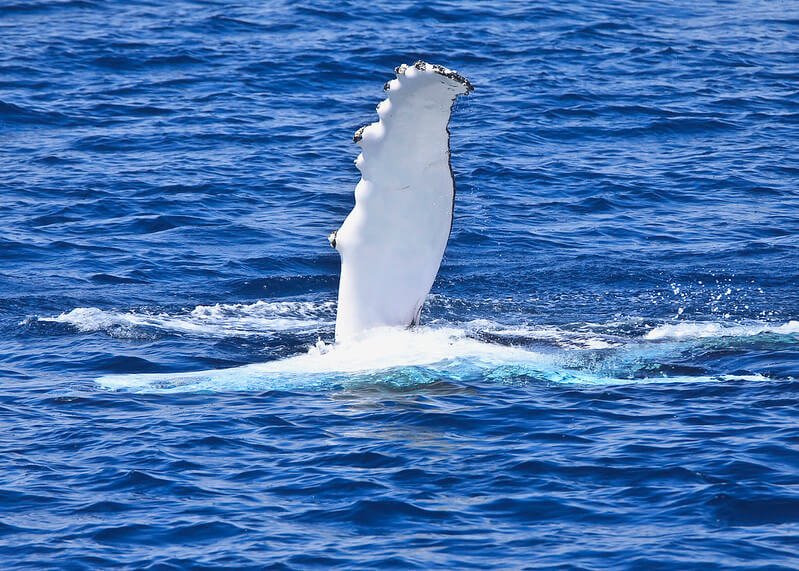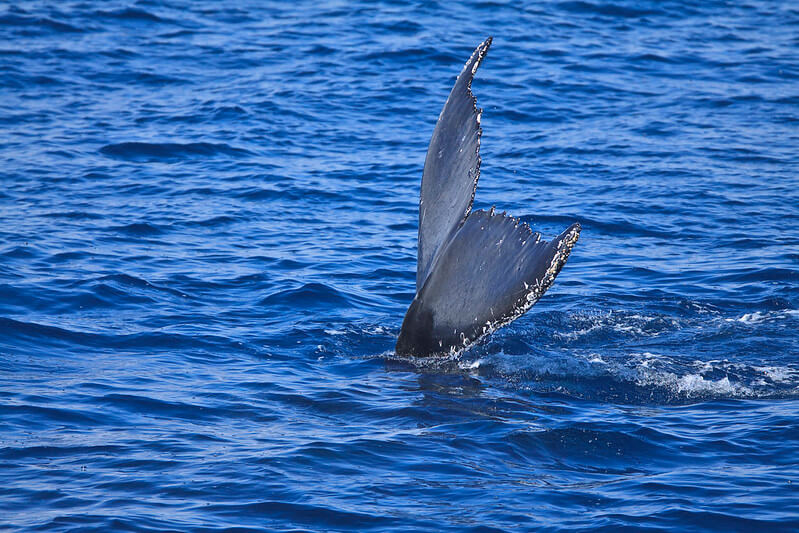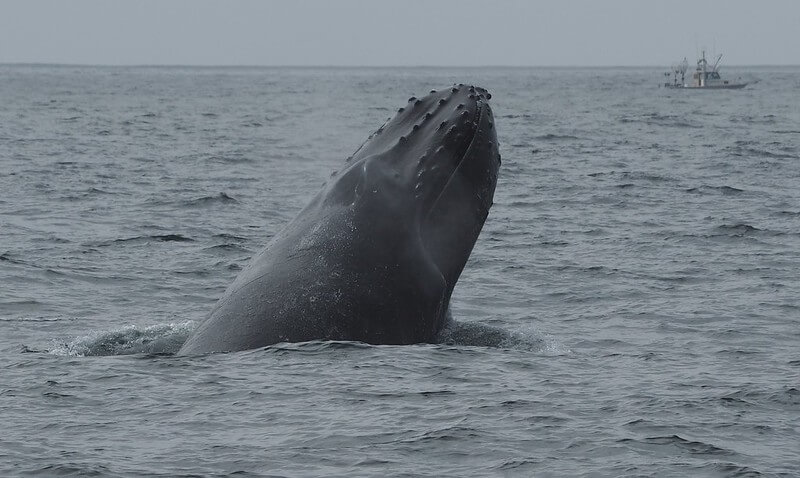When talking about whales it’s impossible to overlook all the damage humans have caused their populations throughout history thanks to whaling, captivity, and industrialization among other causes and practices.
Even today whales continue to be affected by humans and are constant victims of bycatch, vessel strikes, global warming, and more.
So taking into account everything they have to endure it’s impossible to ignore the question “how many whales are left in the world?”
The most widely accepted estimate comes from the International Whaling Commission (IWC) which states that there are at least 1.5 million whales left in the world.
However, these numbers are incomplete as not all species have been assessed and included.
Join me today as I share with you information regarding the population status and trends of different whale species, how many whales are still killed every day, and more.
How Many Whales Are Left In The World?
So first I want to make sure you and I are on the same page when it comes to whales so let’s do a little recap:
All members of the taxonomical order “Cetacea” are whales, and species are divided into two groups:
Baleen whales (14 species)
These marine mammals don’t have teeth and eat via a filter-feeding system using hair-like bristles that hang from the top of their mouth to filter out water while keeping tiny prey such as krill, zooplankton, and small fish for swallowing.
Members of this group are some of the largest whale species such as the blue whale, humpback whale, fin whale, North Atlantic right whale, Gray whale, and minke whale among others.
Toothed whales (76 species)
As their name suggests, members of this group have teeth and feed on larger prey. This group includes dolphins and porpoises.
Now that you and I are on the same page regarding what a whale actually is let’s move on to numbers:
The IWC estimates there are around 1.5 million whales currently swimming through the world’s oceans.
Nonetheless, these numbers are not really accurate as there are many species currently unassessed, and even for the species evaluated there isn’t available data for populations living in more remote areas.

Also, due to the pelagic nature of some species, and the fact that cetaceans spend most of their life deep underwater it’s not easy to calculate the exact number of individuals, and the available numbers are just the best estimate.
Now moving on to the most recent numbers available for the species assessed, please bear in mind that these are estimates and there are several populations that remain unassessed within every species:
Baleen whales:
- Minke whales: 684,300
- Blue whales: 4,800
- Fin whales: 43,000
- Gray whales: 27,430
- Bowhead whales: 20,758
- Humpback whales: 141,980
- Right whales: 12,490
- Sei whales: 29,600
- Bryde’s whales: 41,000
Toothed whales:
- Pilot whales: 780,000
- Belugas: 13,300
- Harbour porpoises: 40,000
- Hector’s dolphins: 14,800
- Maui dolphins: 57
These are the species listed by the IWC with their population status and you can find more detailed information here.
Out of the 90 cetacean species the IUCN (International Union for the Conservation of Nature) has listed 5 as “critically endangered”, 11 as “endangered”, 7 as “vulnerable”, and 12 as “near threatened”.
Let’s review the 2 categories most at risk:
A “critically endangered” listing means that a species is considered to be facing an extremely high risk of extinction in the wild.
The cetaceans currently on this list are:
- Yangtze river dolphin or Baiji: number of individuals is unknown and is considered to be functionally extinct.
- Vaquita: less than 10 individuals left.
- Atlantic humpback dolphin: 1,500
- North Atlantic right whale: 200 – 250
- Rice’s whale: 26
An “endangered” species is one that faces a very high risk of extinction as a result of rapid population declines of 50 to more than 70 percent over the previous 10 years (or three generations), a current population size of fewer than 250 individuals, or other factors.
The cetaceans which are currently listed as endangered by the IUCN, and their estimated numbers at the time of the last assessment (by the IUCN) are:
- Sei whale: 50,000
- Blue whale: 5,000 – 15,000
- North Pacific right whale: population status unknown
- Indus river dolphin: 1,987
- Ganges river dolphin: population status unknown.
- Amazon river dolphin: population status unknown.
- Irrawaddy dolphin: population status unknown.
- Tucuxi: population status unknown.
- Indian Ocean humpback dolphin: population status unknown.
- Perrin’s beaked whale: 500 – 1,164
- Hector’s dolphin: 7,381
Will Whales Ever Go Extinct?
If aggressive measures aren’t put in place and enforced to protect whales it is certain many species will become extinct soon.
It’s important to note that extinction is a natural phenomenon but human activity has significantly increased extinction rates worldwide.
The first ever cetacean to be declared extinct due to human activity was the Yangtze river dolphin, Baiji, declared extinct in 2007.
The vaquita porpoise will soon become extinct as well and the main cause of their decline is entanglement in gill nets.
How Many Whales Are Killed Each Day?
It’s estimated that around 1,000 cetaceans (whales, dolphins, and porpoises) die every day due to entanglement in fishing gear, vessel strikes, and marine debris. These deaths are slow and painful and 100% related to human activity.
Are Whale Numbers Going Up Or Down?
Some species are recovering and even coming near pre-whaling era numbers while some species continue to see a rapid decline.
The humpback whale is one of the species that has made quite the comeback from the brink of extinction and has stable and healthy populations.
All whale species listed as “critically endangered” by the IUCN are showing a “decreasing” population trend.
When it comes to the “endangered” species 7 are “decreasing”, 3 are “increasing”, and 1 has an “unknown” population trend.
Whale Conservation Efforts
There are many actions being carried out by different organizations to help whale populations recover.
There’s a wide array of initiatives including laws regulating whaling, efforts to minimize bycatch, entanglement, and vessel strikes, quick response to strandings and emergencies, and many more.

However, mitigation measures aren’t always effective and whale conservation faces some particular challenges such as:
- Activities such as fishing and freight shipping are deemed vital to national economies and therefore can’t be heavily regulated even though they’re directly related to declining whale populations.
- Although there are laws set in place to protect whales, it is very costly and complex to provide surveillance at sea, resulting in little or no law enforcement.
- National laws do little to protect animals who swim across international borders. For example, Japan, Norway, and Iceland refuse to stop commercial whaling and therefore any cetacean entering their waters is at risk.
Final Thoughts
As you can see, while things are looking a bit brighter for some whale species most of them are still facing a very real risk of extinction and it’s entirely because of human activities.
The good thing is that there’s still hope for these beautiful marine mammals and hopefully they will be swimming the seas for a very long time.
I am a lover of everything nature and animal related with over 15 years of experience in the field of wildlife rescue and education. Currently living in Colombia working with wild and domestic animals and spending all my free time writing about them 🙂

